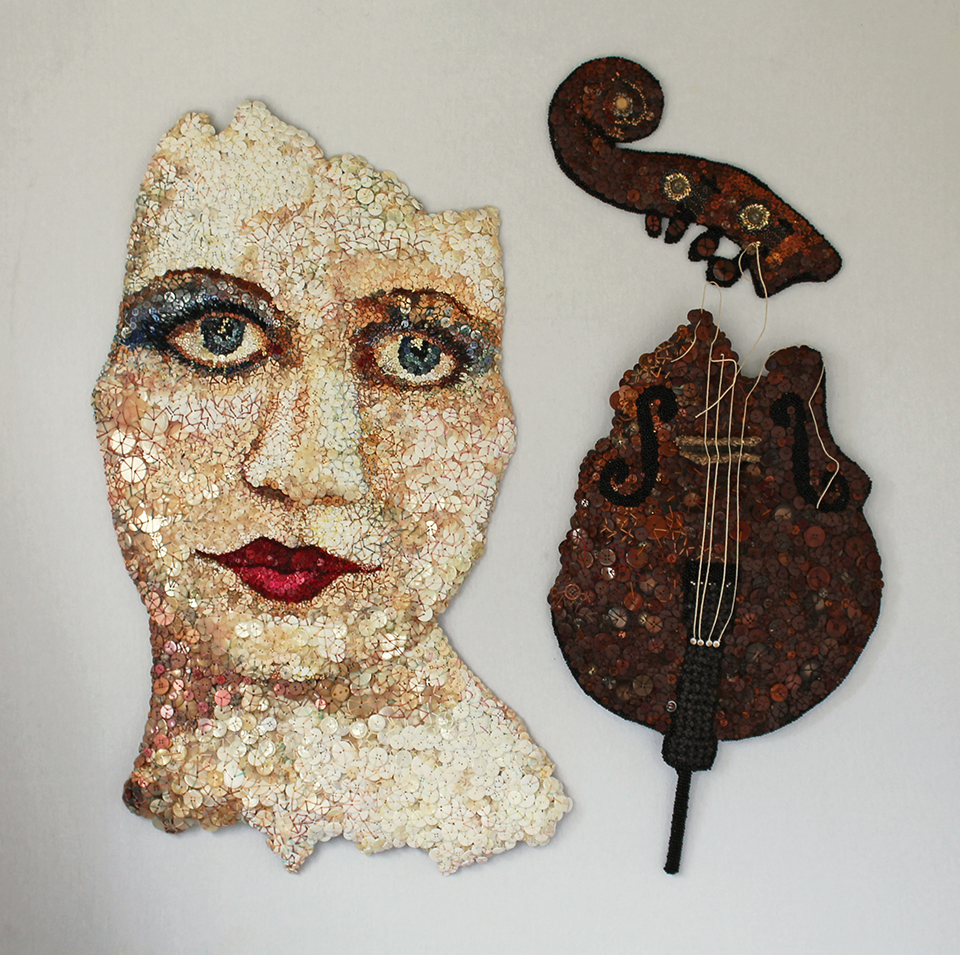With Fiberart International 2022 coming up we wanted to check on artists who participated in previous exhibitions, see what they are up to now and how participating in the exhibition impacted them. If you are a previous Fiberart International participant and would like to update the community on the happenings in your life, please contact Katie Bulova at bulovakatie@gmail.com
Written by Katie Bulova
Marie Bergstedt is a textile artist living in San Francisco. She works primarily in pictorial narratives sculpted with textiles. Her works tell stories, such as family history, family mystery, and the struggle of her community. Exploring relationships and memories are the key to her work. She uses haberdashery, such as buttons and yarn, to capture the spirit of street musicians and joyful dancers, as well as those pondering serious issues. She is a two-time participant in Fiberart International and has exhibited her works throughout the world.
Before establishing a full-time art career, Marie worked in fundraising and development in education and the arts. Every year, she set aside parts of her paycheck to fund a future art practice. Marie didn’t plan for retirement- she planned for art. She fought to establish herself in the art community, prioritizing her own education, skills development, and ability to support her practice.
Marie’s early works were concentrated on two-dimensional pieces. She implemented and mastered techniques that allowed her to articulate the narratives that she carried in her heart. In the end, she used notions and textile tools to reveal something bolder, building sculptural pieces that translate her stories and her memories into the physical realm. Buttons, in particular, allow for the dimensionalities that she sought. Her current pieces incorporate stitching, crochet, knitting, dyeing, and painting into the mix.
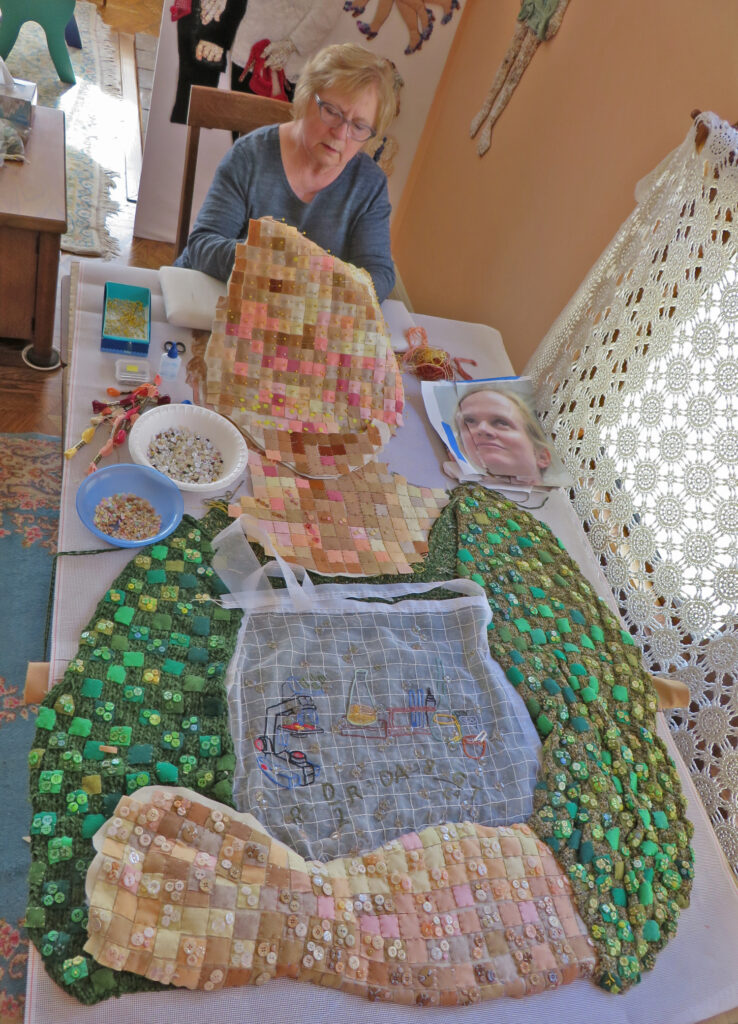
Covid and 2020
For Marie, 2020 was a year of introspection and growth and also anxiety.
A heavy heart remains for the pandemic losses, the horror of inequality and injustice, and for the environment.
In February 2020, Marie flew home from a symposium. A man on the flight caught her eye. He was sick and wearing a mask; this was her personal introduction to the pandemic. Marie knew the world was changing, and she began to live life in isolation. Contemplation replaced travel. A home studio, a garden, and zoom became her tools for the last year. Family gatherings became a sort of theater with outdoor conversations from a distance.
In March 2020, a gallery close to home showcased artists who are finding success without an MFA degree. Both the emphasis of the exhibit and the particular piece that was included were important to Marie. As Covid progressed, what was opportunity became futility. The artwork hung for three months in lockdown from the public.
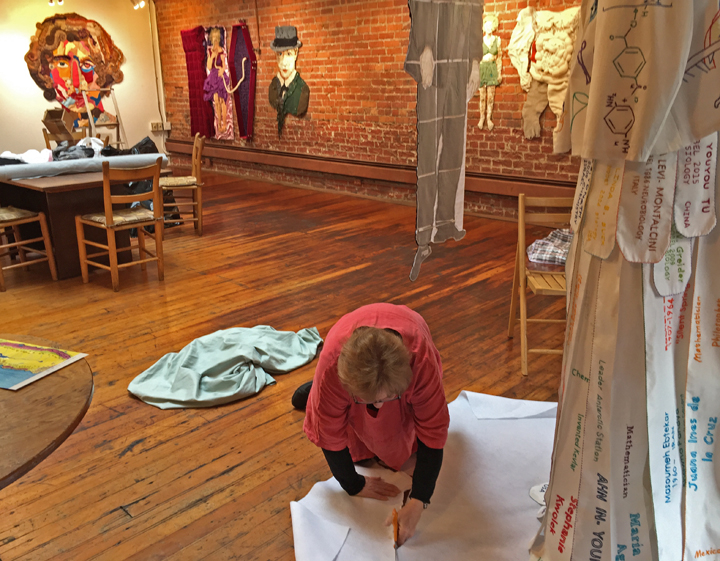
The art Marie created during the Covid shutdowns reflected who she saw from her window, in her memories, or on the news. She layered hooks, eyes, and snaps to reveal the human condition. Life and Death on a Shoestring emerged by discovering a long-forgotten box of shoelaces in a dusty cupboard.
Her muses are often those she has loved. She explores mystery, loss, and grief in a portrait of her grandfather. His death left more questions than answers after an interaction with police 90 years ago. What could he tell, and what would we have done differently if we had known?
Marie always seeks permission before she begins rendering a likeness. She has sketched family in softly embroidered stitch. One lovingly built embroidery series contemplates aging as a figure gazes in a mirror. Is she looking for what is coming or what was lost?
Marie allows us to care for her subject by defining their vulnerabilities. For example, her siblings are sculpted with layer upon layer of buttons, creating a tactile experience as nuanced as the relationship itself. A tiny dancer cavorting across a canvas field is her granddaughter.
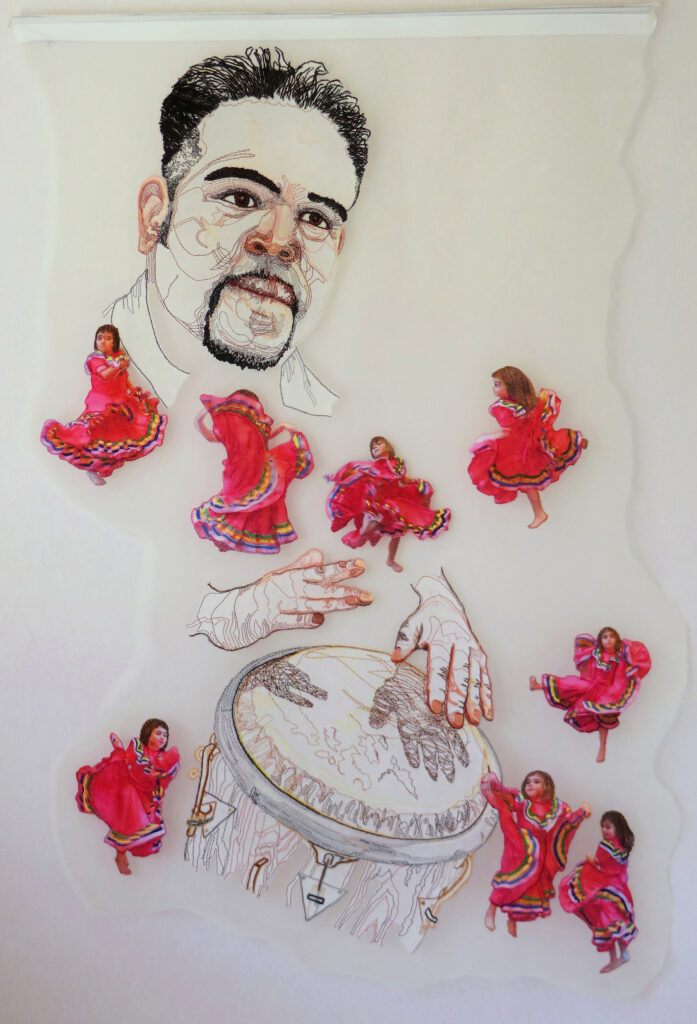
A wide-eyed woman entombed in a coffin-like bed, breathing apparatus strapped across her face, is Marie herself.
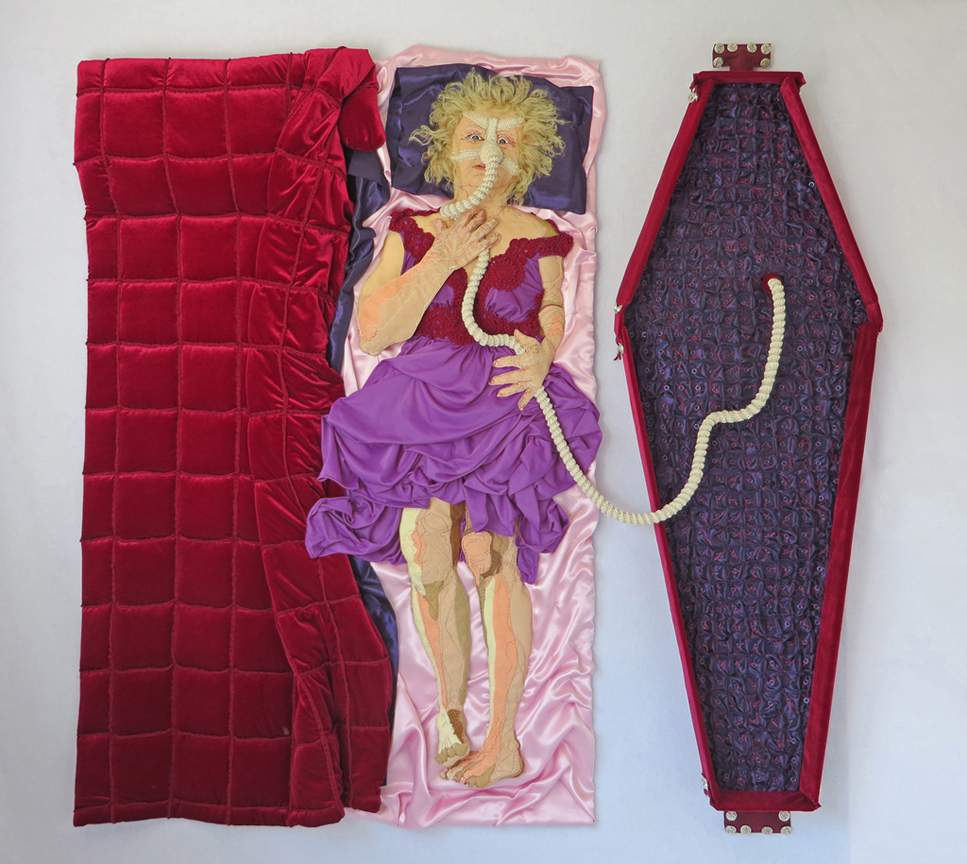
September 9
Marie’s work was profoundly impacted by environmental concerns. I have talked before about September 9. For those outside of Northern California, the horror was not internalized as it was for people who lived through it. It was a day when manmade fires and pollution intersected. There was no noise, no dawn, no noon, no dusk. The world was red or orange, depending on the part of the bay where you lived. Marie described it as living in a horror movie; it felt as if there was no hope and no escape. Pragmatic, she acknowledges that there is no real place to flee: you have to live where you are.
Fiberart International
For Marie, participating in the Fiberart International (FI) was about kinship. FI allowed Marie to share stories with instant friends and to explore favorite haunts with FI administrators and volunteers. Marie met fellow artists who shared her passion for articulating both the world’s triumphs and injustices in craft.
The most meaningful aspect of her participation in Fiberart International is the long-standing friendships that she has created. She has found artists who connect with her practice and her stories.
She has built friendships that feed her technique and her heart. Fiberart International creates opportunities to establish kinship within the art community.
Marie Bergstedt https://mariebergstedtartist.com/home.html
If you are a former Fiberart International participant and you would like to be included in this blog, please contact Katie Bulova at katharine.fitzgerald@gmail.com.

